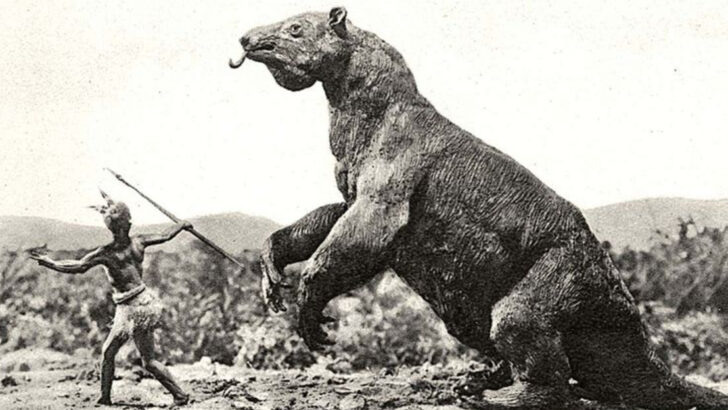Some creatures looked too strange for this Earth—and now they’re gone. Picture a beaver with fangs. A bird taller than a man. A whale with a snout like a swordfish. These weren’t fantasy—they were real, living animals. And they’ve vanished forever. Long before humans kept records, nature was testing wild designs. Claws in the wrong places. Teeth that made no sense. Faces only a mother could love—and sometimes not even that. This list isn’t about dinosaurs. It’s about the truly bizarre animals that once walked, swam, and soared across ancient Earth… and looked like they belonged on another planet. Ready to meet them? Buckle up—things are about to get weird.
Dodo
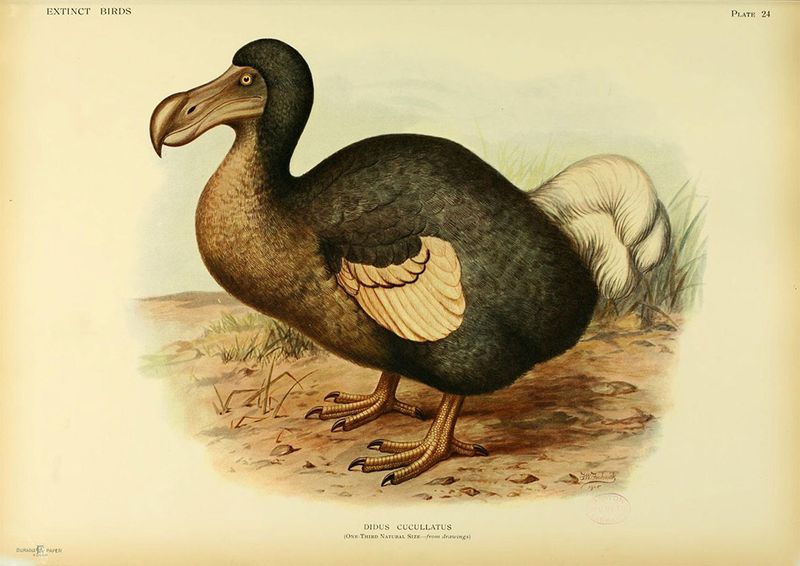
The dodo, a flightless bird indigenous to Mauritius, was known for its large beak and round body. It measured about one meter in height and weighed around 23 kilograms. Despite its cumbersome appearance, it thrived in its environment without predators. The dodo’s unique look, with its small wings and large, hooked beak, made it an intriguing sight. Discovered by Dutch sailors in the 16th century, the dodo quickly became a symbol of extinction due to human interference. Its gentle demeanor and lack of fear towards humans ironically led to its downfall. Today, it remains a symbol of lost biodiversity.
Thylacine
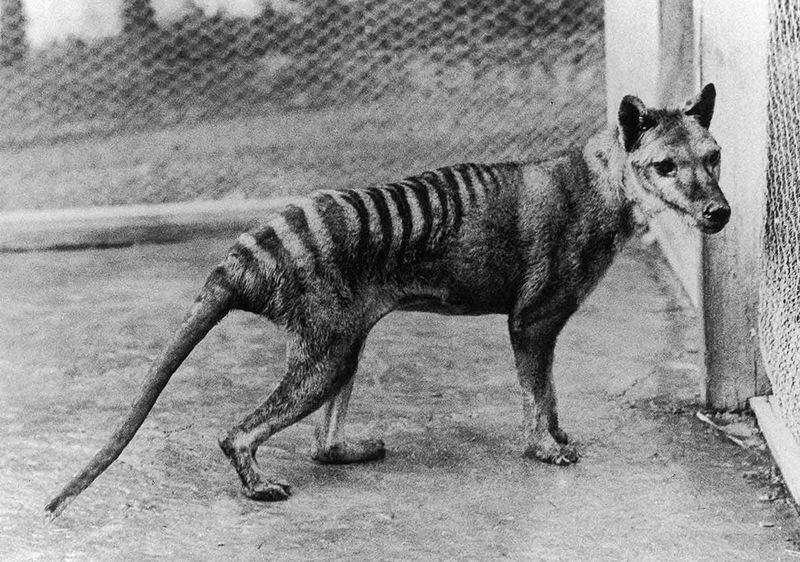
The thylacine, famously known as the Tasmanian tiger, was a carnivorous marsupial native to Tasmania. With its dog-like features and distinctive stripes along its back, it was a unique blend of different animal traits. The thylacine was primarily nocturnal, hunting small animals with remarkable stealth. Despite its fierce appearance, it was shy and avoided human contact. The last known thylacine died in captivity in 1936, marking the end of its species. Its extinction was hastened by human activity and disease. This enigmatic creature continues to fascinate scientists and wildlife enthusiasts worldwide.
Moa
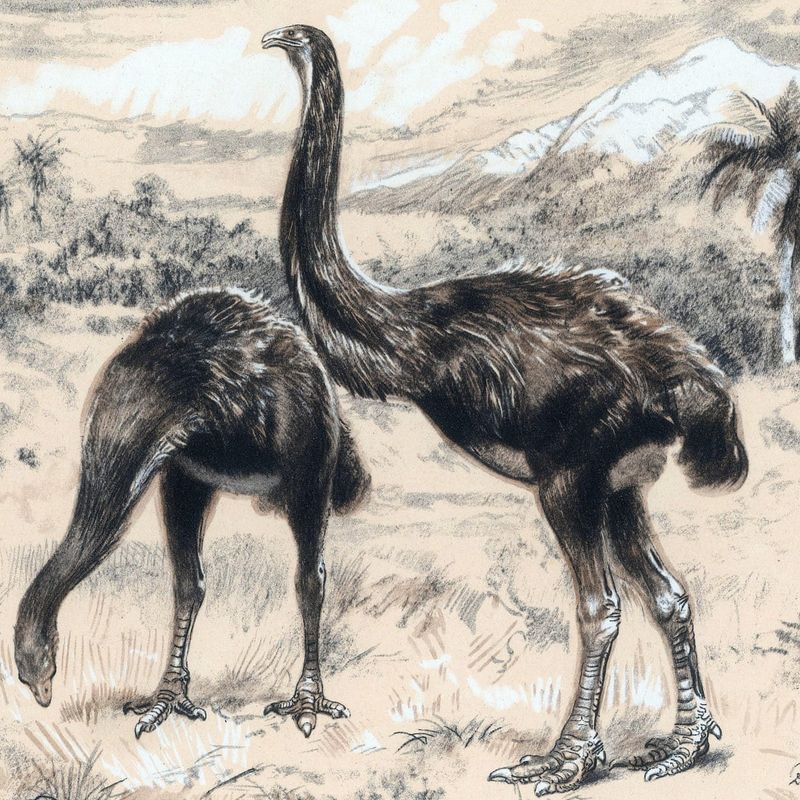
The moa were towering flightless birds native to New Zealand, some species reaching up to three meters tall. These gentle giants roamed the forests and plains, feeding primarily on leaves and seeds. With their long necks and robust legs, moas were perfectly adapted to their environment. They had a significant impact on their ecosystem, acting as primary herbivores. Unfortunately, they were hunted to extinction by early Maori settlers around 1400 CE. The moa’s disappearance marked a dramatic change in New Zealand’s ecology, and they remain a symbol of the challenges of human impact on wildlife.
Quagga
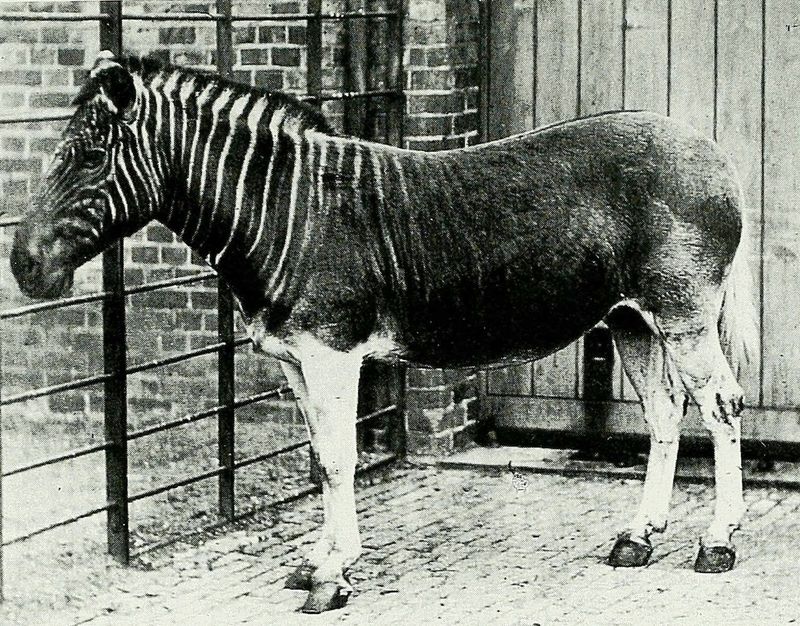
The quagga, a striking half-zebra, half-horse creature, once roamed the African plains. Its distinctive coat featured stripes on its head and neck that gradually faded into a solid brown towards the back. Quaggas lived in herds, grazing alongside zebras and other savanna animals. They were social creatures, known for their strong family bonds and playful nature. Sadly, intense hunting in the 19th century led to their extinction in the wild. The last known quagga died in an Amsterdam zoo in 1883. Today, efforts are being made to bring back this iconic animal through selective breeding programs.
Megalodon
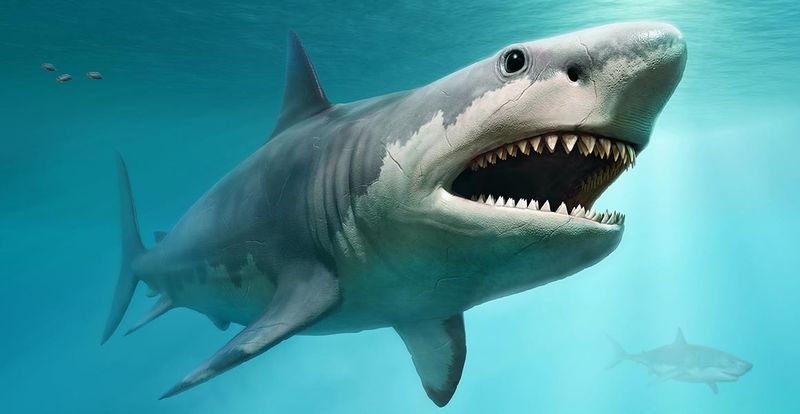
The megalodon, the largest shark to ever exist, ruled the prehistoric oceans with terrifying dominance. This giant predator measured up to 18 meters in length, dwarfing even today’s great white sharks. Its massive jaws could crush the bones of whales with ease, making it a formidable hunter. The megalodon’s teeth, some larger than a human hand, are among the few fossils that remain. Scientists believe climate change and competition with other marine predators led to its extinction. Its legend lives on, fueling both scientific research and popular imagination with the idea of gigantic sea monsters.
Passenger Pigeon
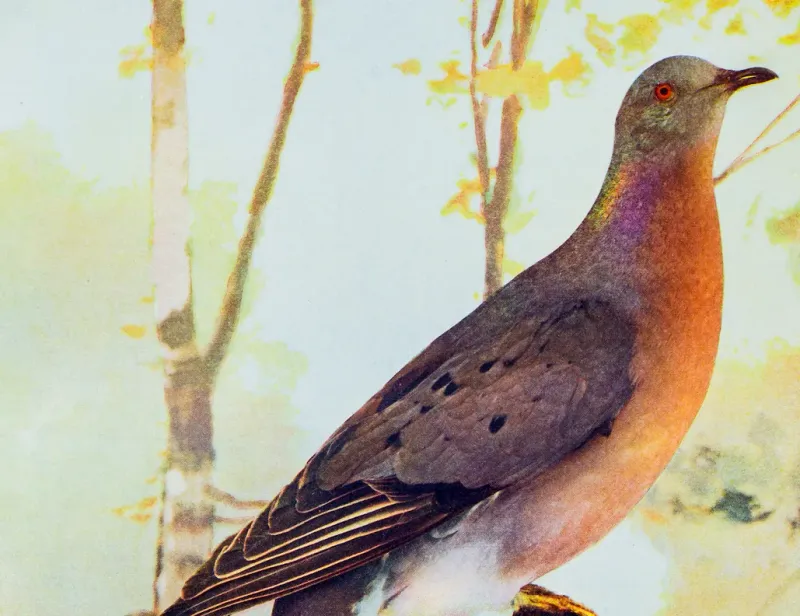
Once numbering in the billions, the passenger pigeon was a marvel of the North American skies. Their flocks were so vast they could block out the sun, creating living, moving clouds. Passenger pigeons were highly social, traveling in massive groups in search of food. They relied on their numbers for survival, which ironically became their downfall. Unregulated hunting and habitat destruction led to their rapid decline. The last known passenger pigeon, named Martha, died in 1914 in captivity. Their extinction serves as a poignant reminder of the consequences of human exploitation of wildlife.
Irish Elk
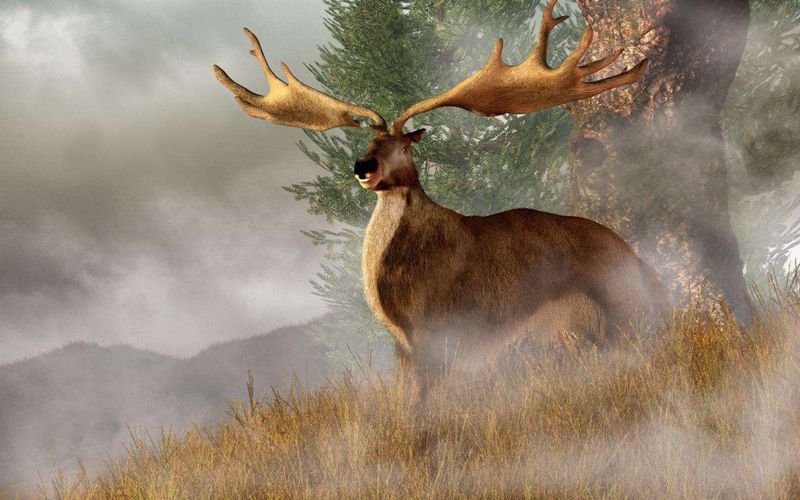
The Irish elk, known for its massive antlers, was a magnificent deer species that roamed across Europe and Asia. These antlers, spanning up to 3.5 meters, made them one of the most impressive herbivores of their time. They thrived in the open woodlands, grazing on grasses and foliage. Despite their name, they were not exclusive to Ireland, but rather widespread throughout their range. Climate change and habitat loss contributed to their extinction around 7,700 years ago. The Irish elk’s awe-inspiring antlers continue to capture the fascination of paleontologists and artists alike.
Steller’s Sea Cow
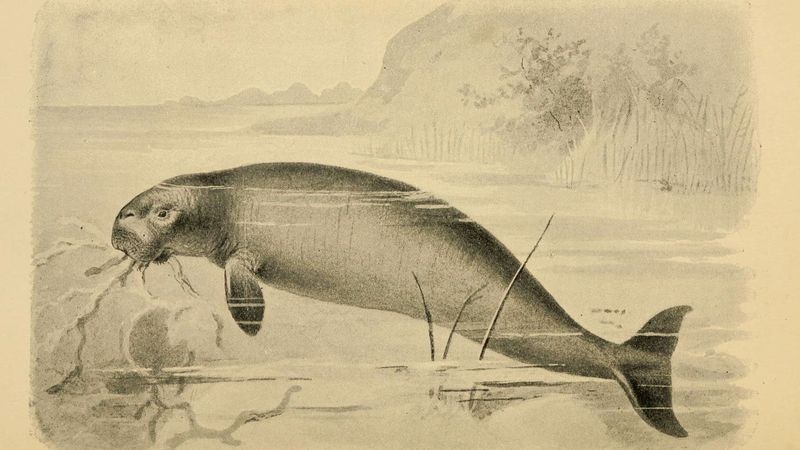
Steller’s sea cow was a gentle giant of the sea, inhabiting the coastal waters of the North Pacific. These massive creatures, reaching up to nine meters, were closely related to modern-day manatees and dugongs. They fed on kelp and other sea plants, contributing to the marine ecosystem’s health. Despite their size, they were defenseless against human hunters. Discovered in 1741 by the explorer Georg Wilhelm Steller, they were hunted to extinction within 27 years of their discovery. Steller’s sea cow remains a symbol of the fragility of marine life in the face of human exploitation.
Sabertooth Cat
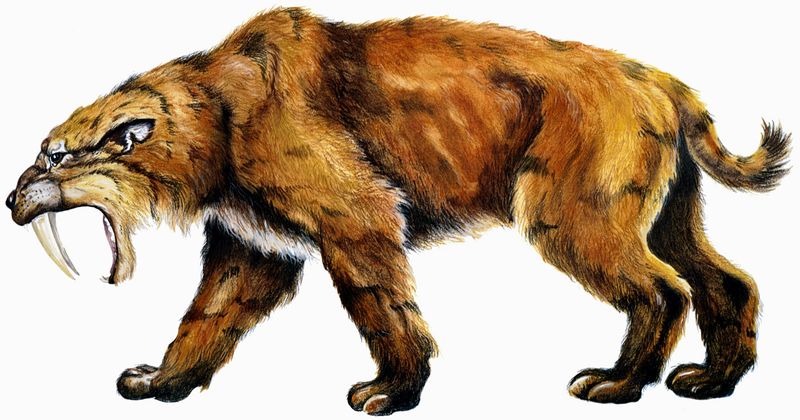
The sabertooth cat, or Smilodon, was an apex predator of the Ice Age, renowned for its long, curved canine teeth. These fearsome hunters thrived in the Americas, preying on large herbivores like mammoths and bison. Despite their intimidating appearance, they were social animals, often hunting in packs. Their massive build and powerful limbs were perfectly adapted for ambush hunting. Changes in climate and the disappearance of large prey contributed to their extinction around 10,000 years ago. The sabertooth cat continues to captivate imaginations, symbolizing the primal power of prehistoric predators.
Glyptodon
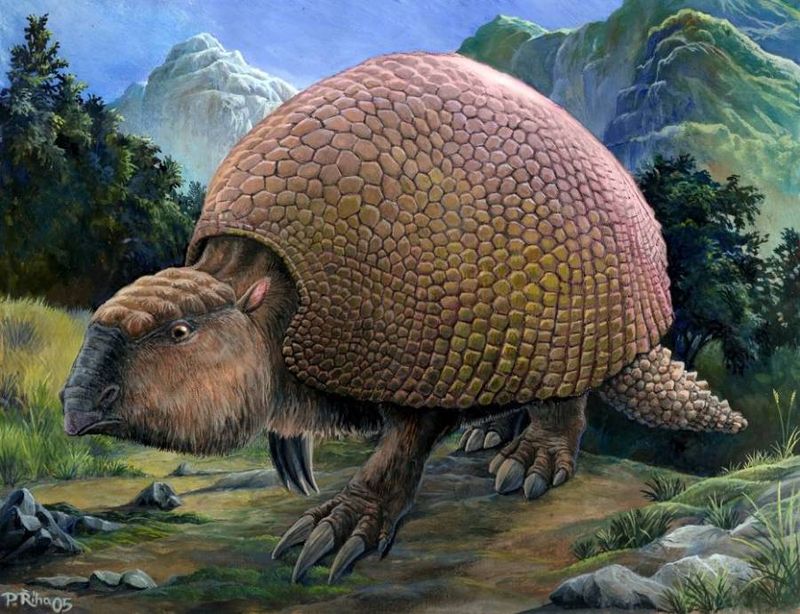
The glyptodon was a prehistoric mammal resembling a giant armadillo, roamed the landscapes of South America. With a heavy, domed shell and a size comparable to a small car, it was a unique herbivore of the Pleistocene epoch. Glyptodons were well-protected from predators, using their armored body and tail as defensive mechanisms. They thrived in diverse environments, from grasslands to forests. Unfortunately, they vanished around 10,000 years ago, likely due to climate change and human hunting. The glyptodon’s robust armor and odd appearance continue to intrigue scientists and inspire artistic interpretations.
Baiji
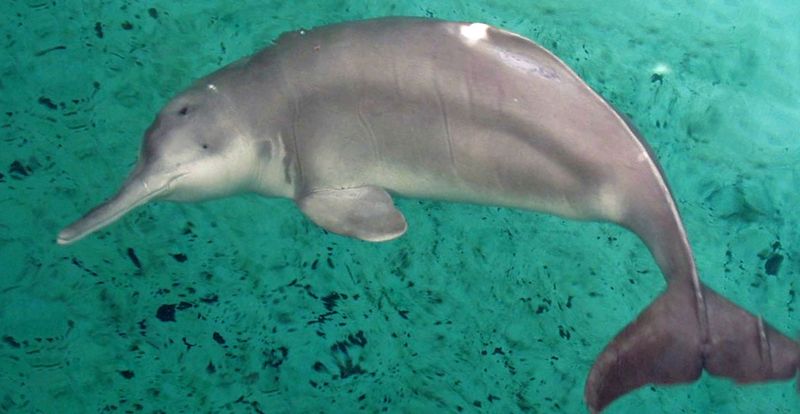
The baiji, also known as the Yangtze River dolphin, was a freshwater dolphin endemic to the Yangtze River in China. Its long, narrow beak and smooth, pale skin gave it an ethereal appearance. Baijis were highly social and navigated the murky waters using sophisticated echolocation. Industrialization and habitat degradation led to a rapid decline in their population. Declared functionally extinct in 2006, the baiji’s disappearance is a poignant symbol of the impact of human activity on aquatic ecosystems. Conservationists continue to study the baiji’s ecology, hoping to prevent similar losses in the future.
Great Auk
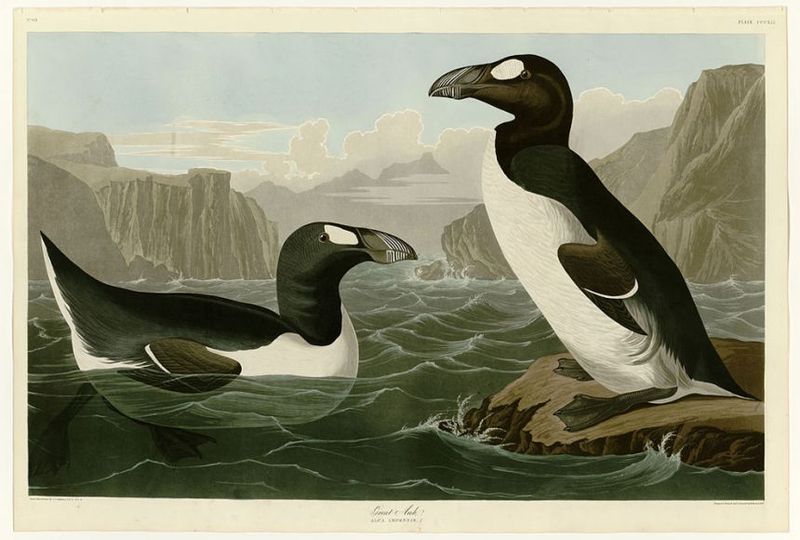
The great auk was a large, flightless bird that once inhabited the North Atlantic’s rocky shores. Resembling a penguin, it was well-adapted to cold ocean waters, using its short wings to ‘fly’ underwater in search of fish. These social birds nested in dense colonies, raising their young on remote islands. The great auk’s inability to fly made it vulnerable to human hunters. By the mid-19th century, intense hunting for its feathers and meat led to its extinction. The last known pair was killed in 1844. The great auk remains a tragic reminder of the consequences of unsustainable exploitation.
Dire Wolf
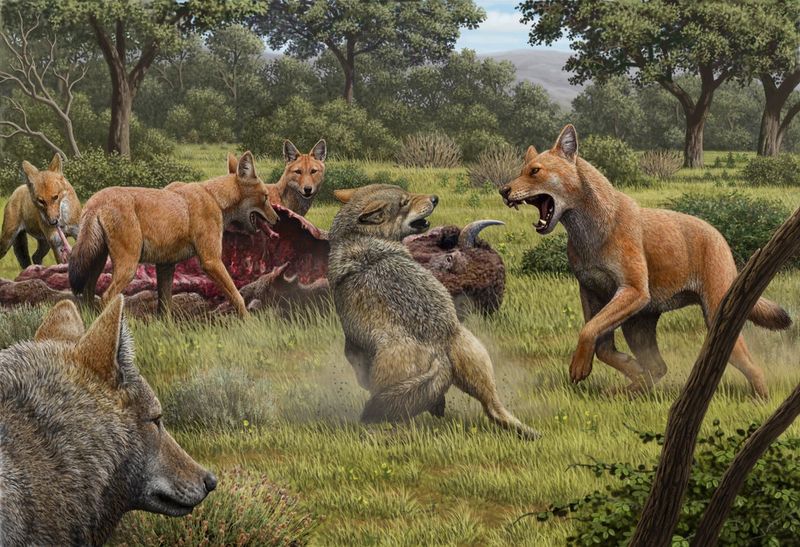
The dire wolf, a legendary predator of the Pleistocene, was larger and more robust than today’s gray wolves. These formidable hunters roamed across North and South America, preying on large mammals such as bison and horses. Their strong jaws and teeth were perfectly adapted for crushing bone. Dire wolves lived in packs, exhibiting complex social structures similar to modern wolves. Climate change and competition with other predators led to their extinction approximately 9,500 years ago. Dire wolves have found new life in popular culture, inspiring stories and myths about these formidable creatures of the past.
Pyrenean Ibex
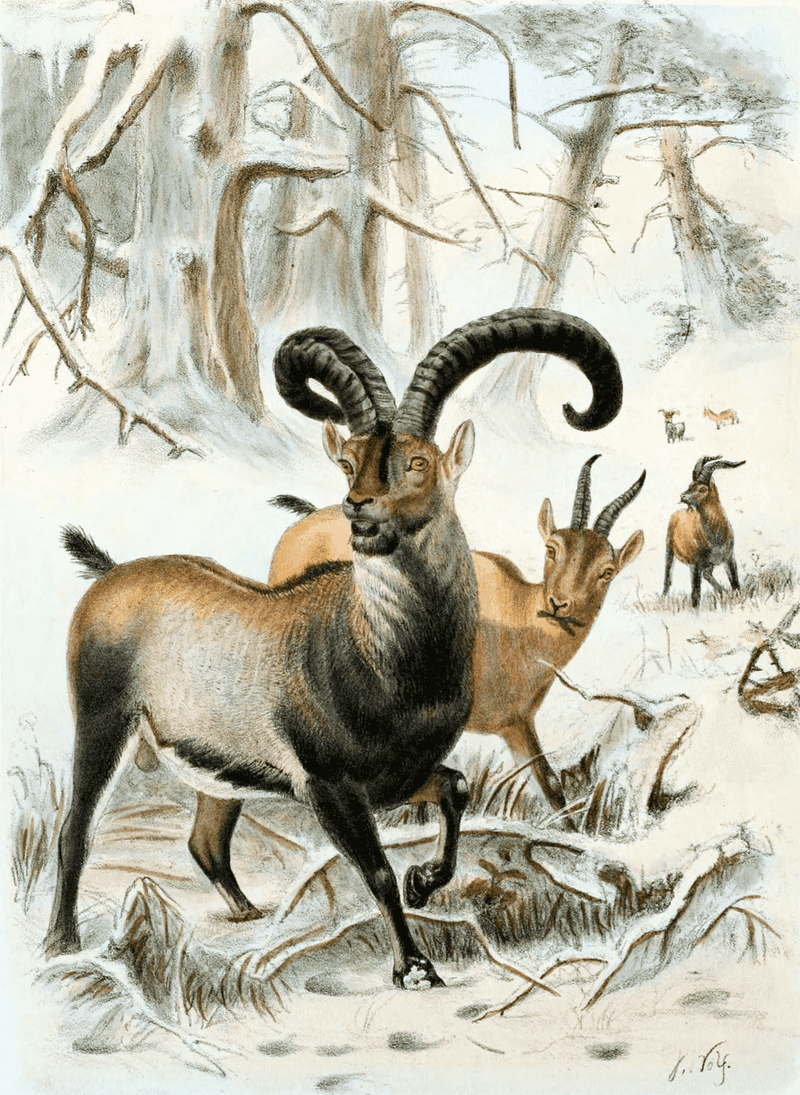
The Pyrenean ibex, a wild goat species, once roamed the rugged mountain ranges of the Pyrenees. With their impressive curved horns and agile climbing skills, they were well adapted to their rocky habitat. These herbivores grazed on mountain shrubs and grasses, playing a vital role in their ecosystem. Despite their adaptability, hunting and habitat loss led to their decline. In 2000, the last known Pyrenean ibex died, marking the species’ extinction. A failed cloning experiment briefly brought them back in 2009, highlighting the challenges and possibilities of de-extinction efforts.
Haast’s Eagle
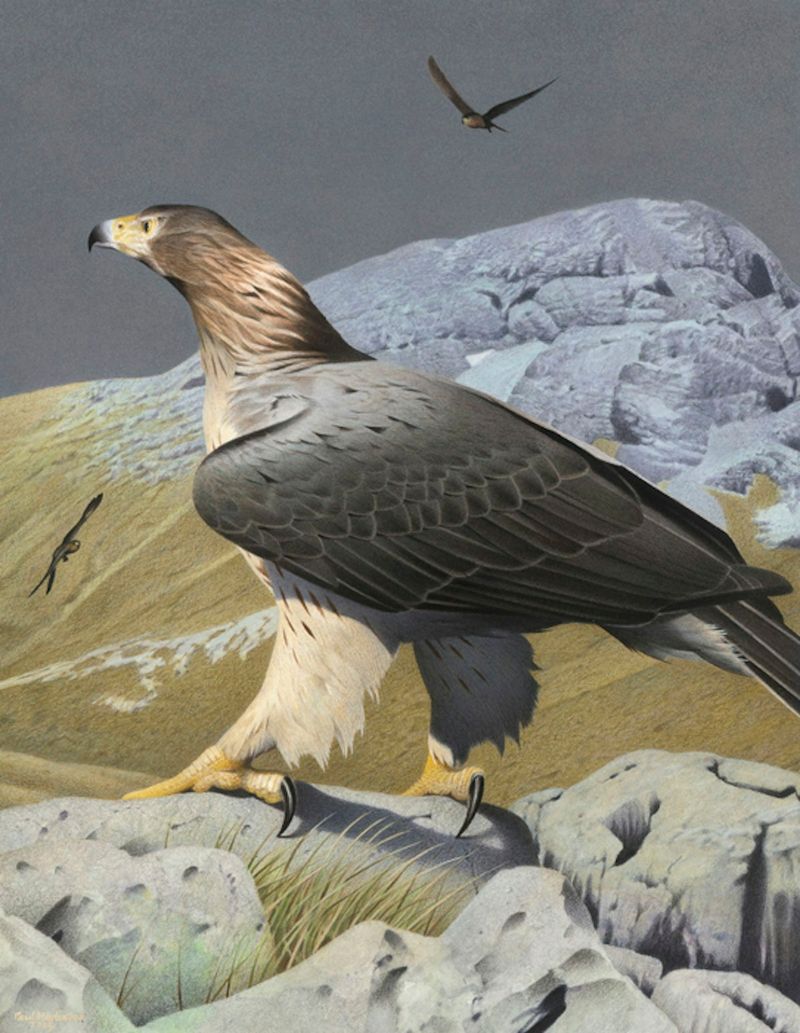
Haast’s eagle was a formidable avian predator, soaring through the skies of prehistoric New Zealand. With a wingspan exceeding 3 meters, it was the largest eagle known to have existed. It preyed primarily on large flightless birds like moas, using its powerful talons to deliver fatal blows. Haast’s eagles were apex predators, playing a crucial role in their ecosystem. They became extinct around 1400 CE, following the disappearance of their primary food source, the moa. Haast’s eagle remains an icon of avian power and adaptation, inspiring both scientific interest and cultural legends.
Mastodon
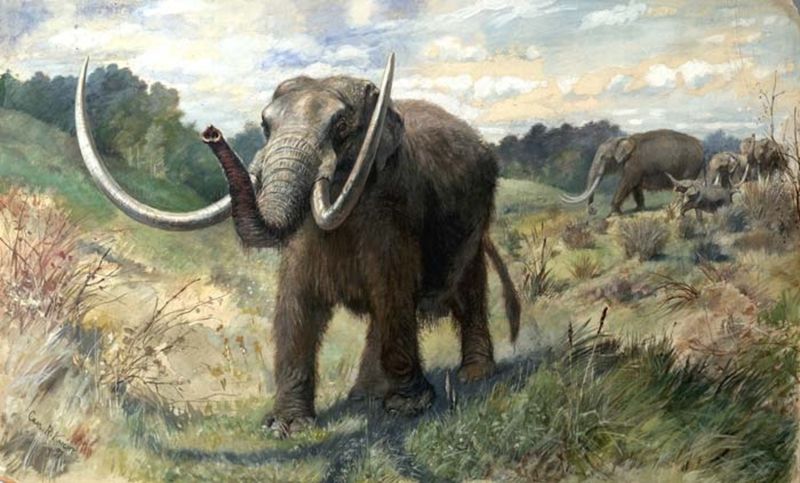
Mastodons were massive elephant-like creatures that roamed North America during the Pleistocene epoch. With long, curved tusks and a shaggy coat, they were well-suited to cold environments. Mastodons were herbivores, feeding on a variety of vegetation, from leaves to twigs. Their social structure was similar to modern elephants, forming close-knit family groups. Climate change and human hunting contributed to their extinction around 10,000 years ago. The mastodon’s distinctive appearance and size continue to captivate paleontologists, enriching our understanding of prehistoric ecosystems and megafauna.
Carolina Parakeet
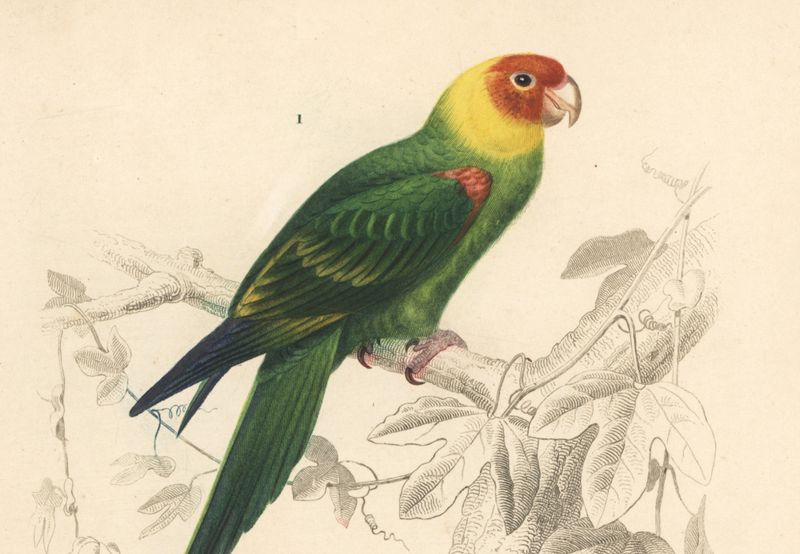
The Carolina parakeet, once abundant in the southeastern United States, was known for its vibrant green, yellow, and orange plumage. These social birds lived in large flocks, feeding on seeds and fruits. Their beauty made them a target for hunters and collectors, while habitat destruction further diminished their numbers. The last known Carolina parakeet died in captivity in 1918. Their extinction highlights the fragile balance between wildlife and human expansion. Today, they are remembered for their striking appearance and the ecological void they left behind in America’s forests.
Giant Ground Sloth
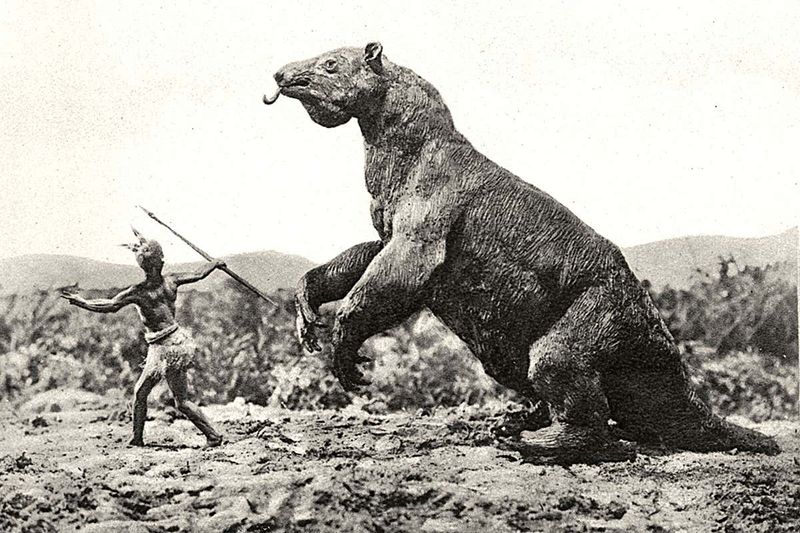
The giant ground sloth, a colossal herbivore of the Pleistocene, roamed the forests of South America. These creatures, reaching up to six meters in length, used their long claws to pull down branches and leaves. Despite their size, they were gentle giants, moving slowly through their environment. The giant ground sloth’s thick fur and large body helped them regulate temperature, adapting to various climates. They became extinct around 10,000 years ago, likely due to human hunting and environmental changes. Their fascinating anatomy and lifestyle continue to intrigue scientists and the public alike.
Dunkleosteus
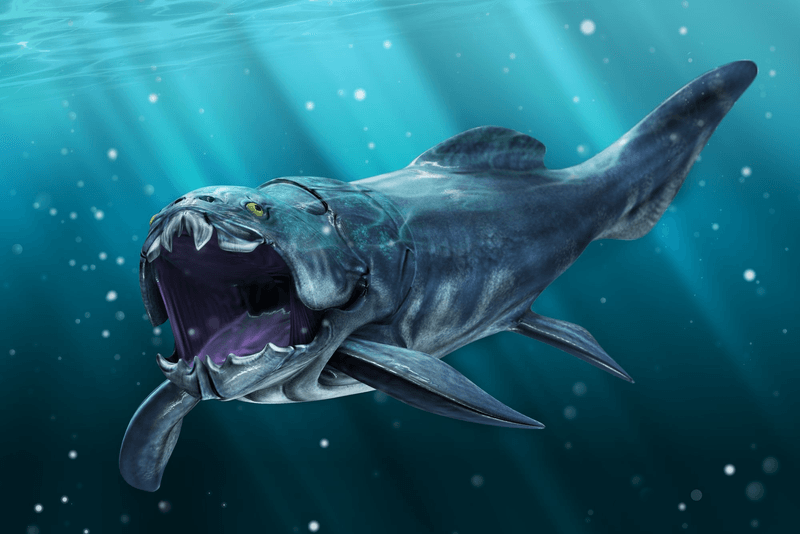
Dunkleosteus was a prehistoric fish, renowned for its armored body and powerful, shearing jaw. Roaming the seas during the Devonian period, it was one of the top predators of its time. Dunkleosteus could reach lengths of up to 10 meters, using its sharp-edged jaw plates to crush prey. Its bony armor provided protection against other marine predators. Despite its fearsome appearance, little is known about its behavior and ecology. Dunkleosteus’ unique design continues to fascinate paleontologists, offering insights into the diversity and adaptability of early marine life forms.
Aurochs
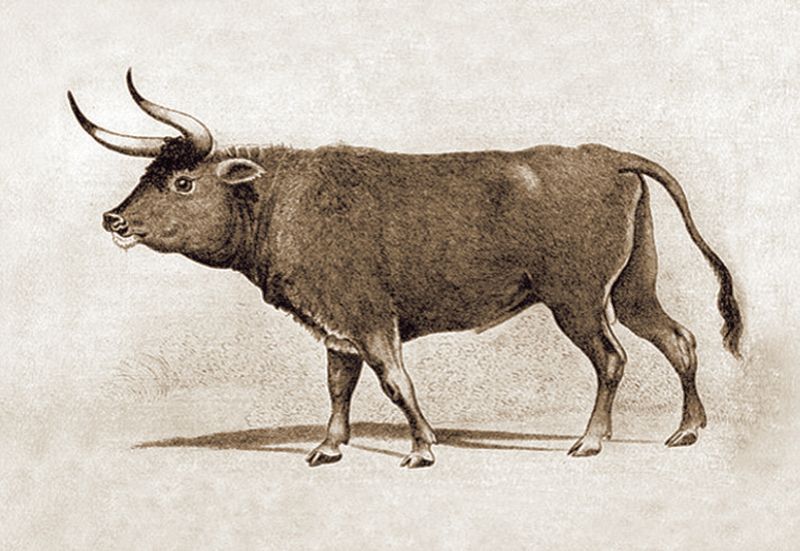
The aurochs, the wild ancestor of modern cattle, once roamed the forests and plains of Europe and Asia. With their large horns and robust bodies, they were powerful grazers. Aurochs played a vital role in their ecosystems, influencing vegetation patterns and supporting predators. They were hunted for meat and hides, and their domestication led to the cattle we know today. The last known aurochs died in Poland in 1627, marking the end of one of history’s most iconic animals. Efforts are ongoing to resurrect the aurochs through selective breeding and genetic research.
Helicoprion
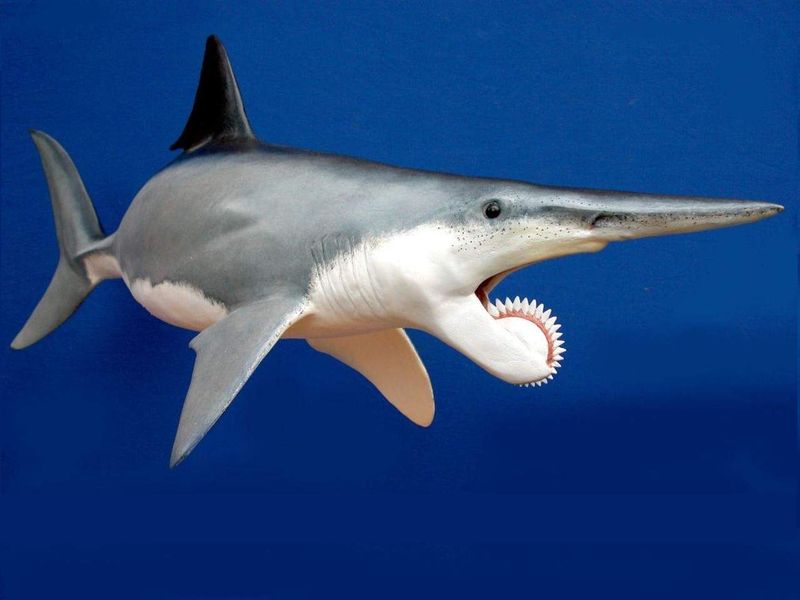
Imagine encountering a shark with a spiral saw in its mouth! The Helicoprion, an ancient predator, had a unique whorl of teeth that baffled scientists for years. This bizarre jaw structure likely allowed it to slice through prey with precision.
Found in the deep waters of the Paleozoic era, Helicoprion’s appearance was both intimidating and fascinating. Its streamlined body indicated a proficient swimmer, capable of swift, agile movements.
Did you know? Helicoprion’s fossilized jaws were initially mistaken for ammonite shells, adding a twist to its discovery story!
Arthropleura
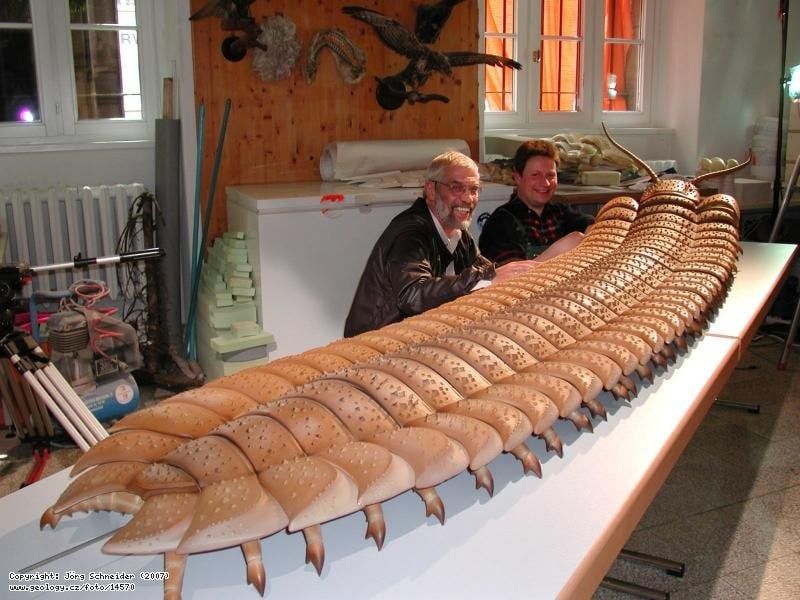
Stretching up to 8 feet long, Arthropleura was a giant among arthropods. This colossal, millipede-like creature roamed the lush forests of the Carboniferous period, thriving in the oxygen-rich atmosphere.
Despite its fearsome size, evidence suggests it was herbivorous, feasting on the abundant plant life of its era. The sheer scale of Arthropleura’s body reflects a time when nature favored the grandiose.
Fun fact: Arthropleura’s size is partly attributed to the higher oxygen levels in ancient Earth, giving it room to grow and flourish in its primordial habitat.

